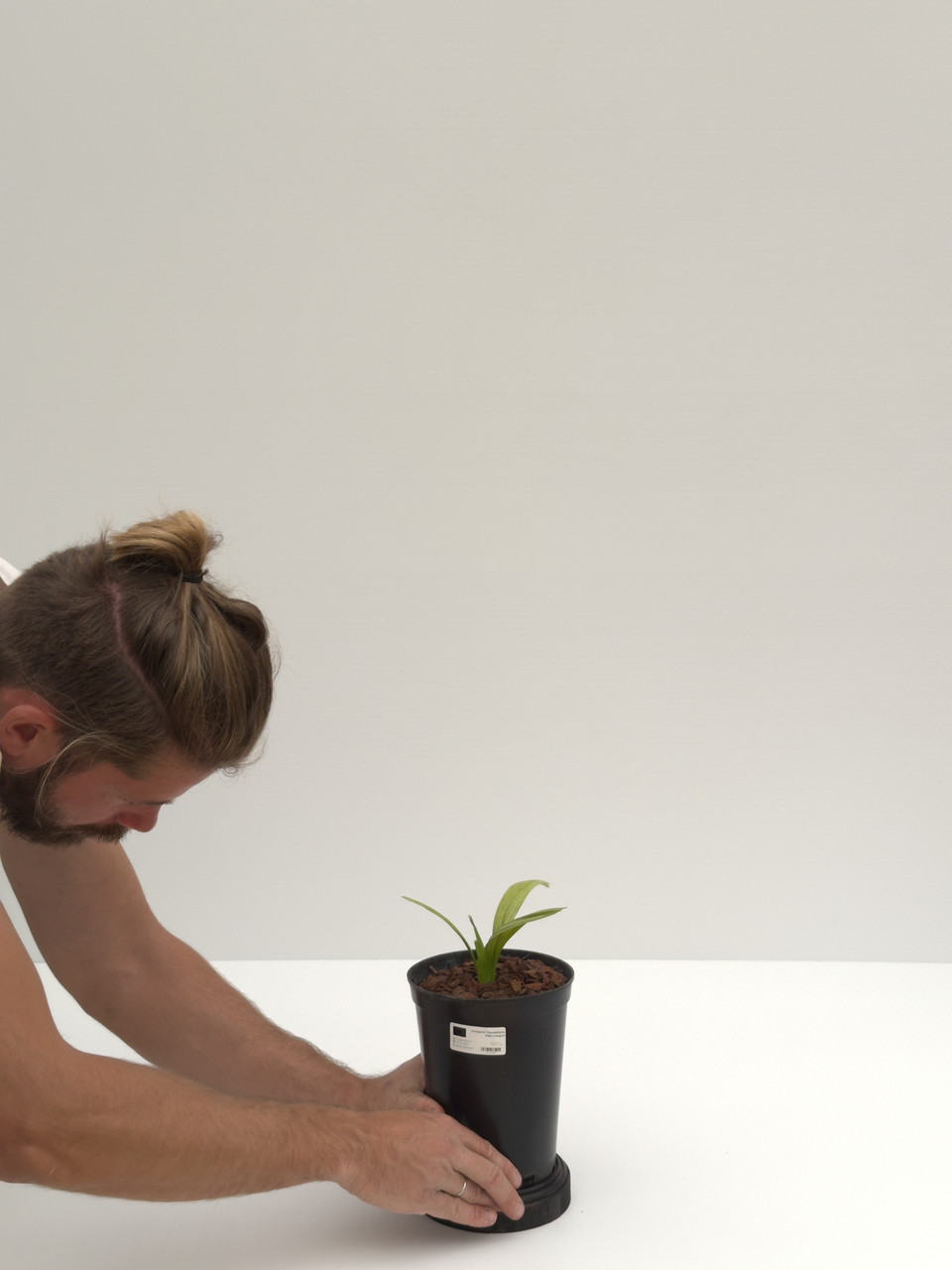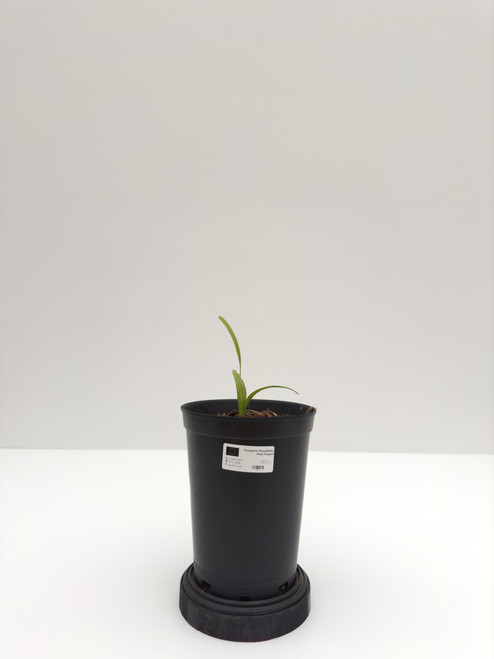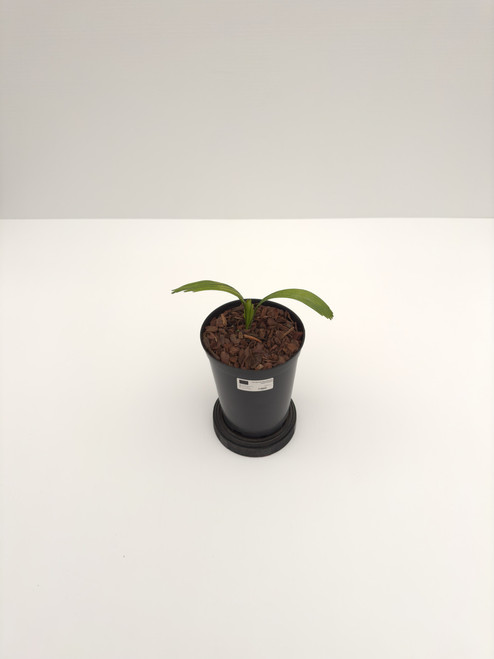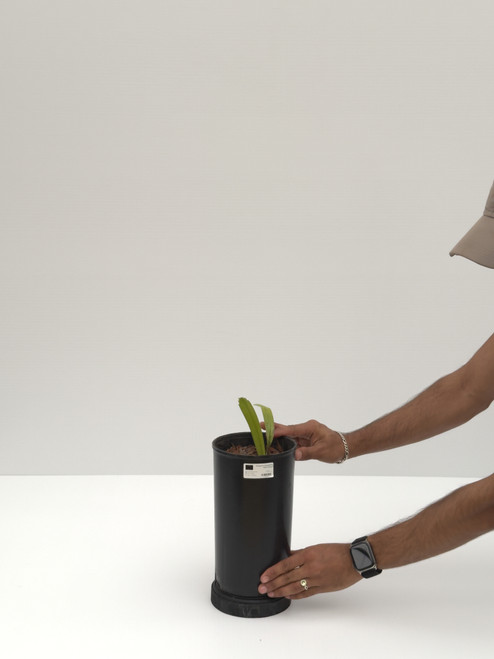Product Description
Habitat and Distribution
Malaya, Santa Cruz Is., Society Is., and Vanuatu. Native to lowland rainforests of the Soloman Islands, and Vanuatu.
Description
Solitary trunk of up to 3 m in height and 5-6 cm in diam., Leaf circular, undivided and regularly pleated leaf; about 22 inch or more in diameter with a notched edge, with the old dry leaves persisting.
Ruffled fan palm is perhaps one of the most interesting and elegant of all small palms. Its glossy, pleated, fan-like fronds are fantastic as are its drooping cluster of red fruits that mature late in the season. This evergreen, frost-tender palm is native to the wet, humid rainforests of the Republic of Vanuatu and the Solomon Islands east of Australia. It's a small understory palm that’s ideal for small, tropical landscapes as well as interiorscapes.
Atop the thin, fiber covered trunk of this palm is a crown of twelve to twenty beautiful leaves. Each glossy, deep green frond is wedge-shaped and looks as if it’s been pleated. The frond stems (petioles) are long and have sharp, curved teeth at the base. Most are held upright but the oldest arch gracefully. In early or midsummer, a cluster of yellowish white blossoms appear. These develop into small, round, red fruits by autumn. Editing by edric.
Culture
Licuala grandis likes moist soil and - when mature - is comfortable in full sun as long as the humidity is high. In the sub-tropics, where there are longer periods without rain this palm requires some shade and regular watering. Although there are Licuala grandis known to have survived temperatures of -1.5° C. it is advisable to plant this palm in regions only where temperatures do not fall below 3 degrees C.
Partial shade or dappled sun when small and young. Older specimens will tolerate more sun if humidity is high and summer temperatures not too scorching. For good health plant in a fast-draining soil that’s fertile and evenly moist. Sandy soil amended with lots of humus is ideal. For dramatic landscape effect, cluster ruffled fan palm beneath a tall shade tree or shaded building foundation. Indoors it will become a nice container specimen as long as it receives very bright light, warmth and its soil never becomes dry. This palm responds favorably to frequent, light fertilization. Cold Hardiness Zone: 10b
Comments and Curiosities
The Licuala grandis is a truly out of the ordinary palm.It's beauty is deraigned from it's magnificient fan-like fronds, which dominate the palm at it's early age. I purchased a Licuala grandis from the Fairchild sale in November of 2003. It was a small palm and has prospered in a somewhat shaded location.It is far from a fast grower but is now over 3 feet tall. This is in the Palm Beach area and it has weathered easily a temperature of 40F. A year later, this specimen is finally trunking. On another interesting note, I found numerous 8 to 10 foot tall slender trunked specimens at Ann Norton Sculpture Gardens in West Palm Beach,Florida.
Perhaps the most difficult weather condition experienced was our suceesion of Hurricanes and particularly Hurricane Wilma in 2005. The large fronds are simply not designed for wind exposure.The largest and most stunning specimens I have viewed were at Fairchild Gardens. These mature specimens are 10 to 15 feet tall with intriguing slender wood trunks. A curator estimated their age at close to fifty years.
Well known by now for its large, circular, simple, undivided and closely pleated leaves, this Licuala makes an unusual plant for indoors or out. The seed germinates readily and grows slowly but steadily in the tropical or warm subtropical garden, producing a slim trunk in the process. It can be planted in sun or full shade but should be out of the wind. (RPS.com)

































